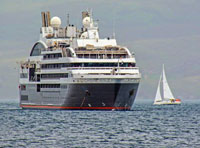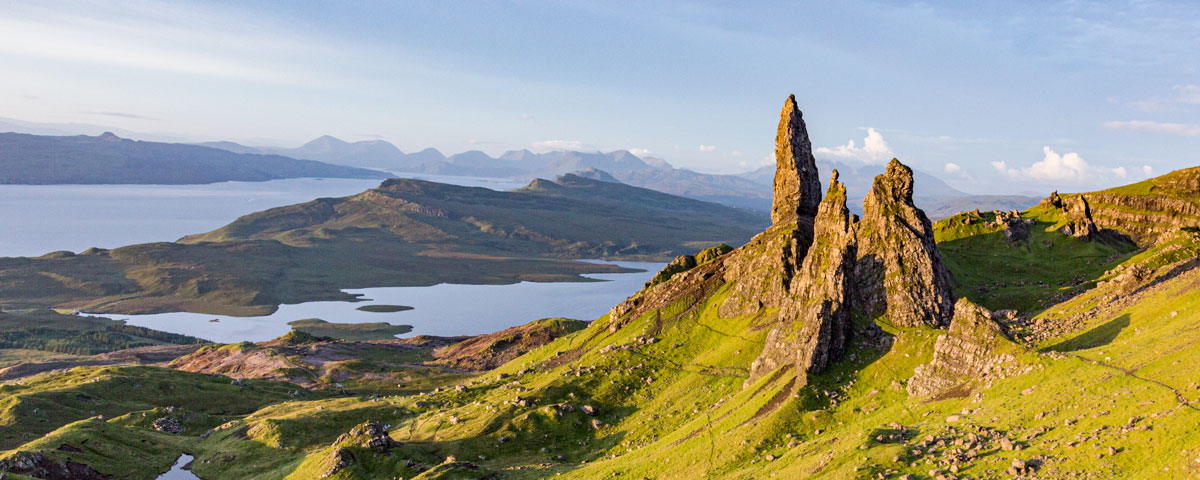
The Isle of Skye is one of Scotland’s most popular tourist destinations. Covering 1,656 km2, the Island greets over 650,000 visitors a year, generating £260m to the local economy and tourism related businesses employ approximately a quarter of the local population of around 13,000. Visitors come to Skye year-round and the tourism industries dominates island life.
The hospitality industry is the third largest employer of people on Skye, next to the public and retail sectors. Owing to the nature of the tourist seasons, part-time and zero hours contracts tend to dominate the spring and summer job offer and housekeeping, front of house, bar work, kitchen assistants, chef work and tour guides are the posts most advertised before the start of the season.
The growing demand for local services has had a positive economic impact on the Island by making a sustainable contribution to business income, investment opportunities and regional employment. There are a good number of artists and makers on the Island producing art, craft and photographic works.
Accommodation providers on the Island vary between professional and private catering operators who work out of hotels, B&Bs, private homes, croft houses, pod and camp sites. The retail sector mainly comprises of small businesses and cottage industries selling locally made craft products and high-quality food produce. Larger retailers such as Diageo (owners of Talisker Whisky) and the big supermarkets also employ many local people on full and part-time permanent contracts.
Food providers tend to dominate the towns’ high streets but demand for food is often so high in the summer (especially between July and August) that booking a table months is advance is necessary.
While thousands of visitors bring in much needed revenue to the Island’s businesses, the challenges of balancing increasing visitor numbers with economic development, environmental conservation and community needs remain significant.
A lack of suitable infrastructure and a rise in private online accommodation providers, coupled with increasing visitor numbers, has led to problems for local people including congestion; a reduction in available housing for locals; a deterioration in road surfaces; longer journey times; widespread littering; environmental erosion; and labour shortages.
The Scottish Government’s 2019 Report, Research into the impact of short-term lets on communities across Scotland, revealed that one in five dwellings on Skye were listed as Airbnbs alone. In consequence, this dearth of long-term rentals and rise in second homes has led to housing shortages across the Island which has had a direct impact on the local economy and many businesses have been forced to reduce services and stall investment for the simple reason they cannot get staff.
Visitor trends, especially since Covid, have changed over the past few years, with the majority of visits to the Island being short stay and micro-breaks (less than three days) and often no stay. This trend is proving to have a negative impact on rural businesses and the popularity of the camper van holiday means less visitors are inclined to shop local, preferring instead to stock up on provisions from city supermarkets.
Before Brexit, Skye’s hospitality industry relied heavily on casual workers from EU Countries. Staff shortages, compounded by lack of affordable accommodation for workers, soaring inflation and the cost-of-living crisis have all taken their toll on the sector and, in 2023, many hotels and restaurants complained they were forced to close their doors on certain days during the high season owing to a lack of staff.
Despite having a bridge and regular ferry services, Skye’s isolation from the mainland is characterised by poor transport networks around the Island. Buses are infrequent, there is no train service beyond Kyle and no airport. Owing to distances between the main towns and attractions, taxis can prove expensive. There is, therefore, a year-on-year increase in private or hired vehicles coming from the mainland. In 2023 the number of vehicles crossing the westbound lane of the Skye Road Bridge between April and September rose by 11% (496,753) over 2022, an increase of 50,000. In 2022, 212,847 passengers crossed over from Armadale to Mallaig on the CalMac Ferry, 91,450 more than the previous year, an increase of 75.33%.
Skye is seeking to address these problems. The Island is finding solutions to improve outcomes for both communities and visitors by preserving heritage and investing in the communities whilst giving the best experience to visitors during their stay.
Money is being spent on improving footpaths, toilet facilities, parking at the main sites and laybys. There is an on-going cycle network project; footpaths across the major visitor sites have been upgraded to prevent environmental deterioration; parking and toilet facilities at the major sites have been considerably improved.
